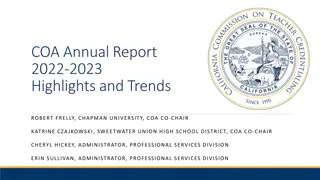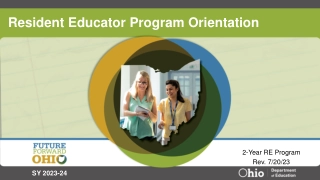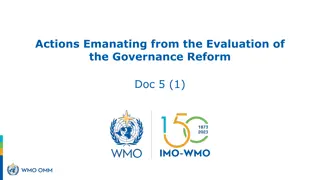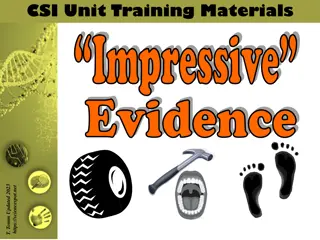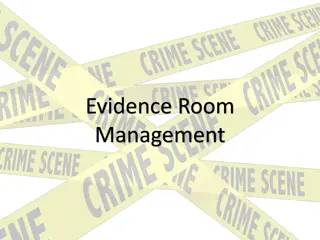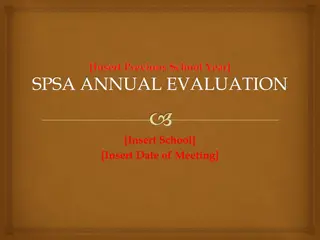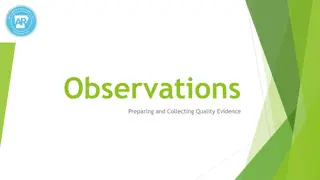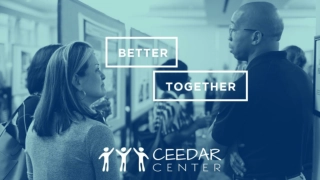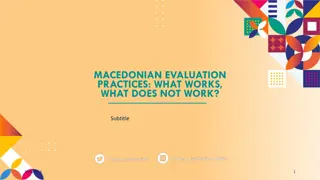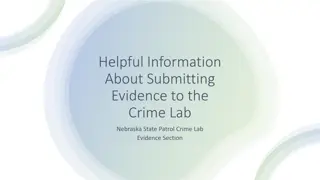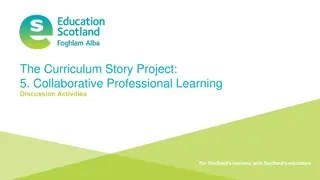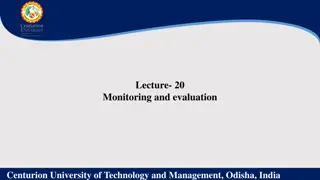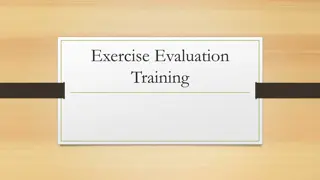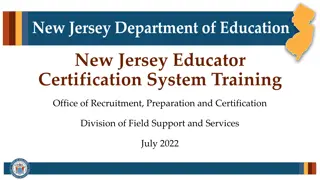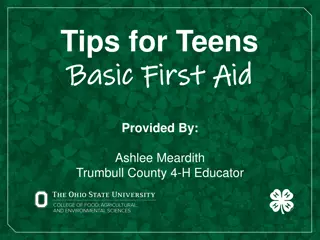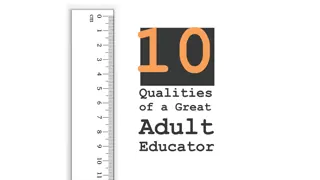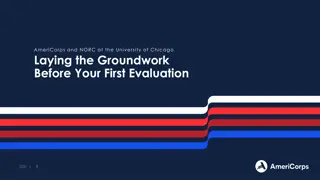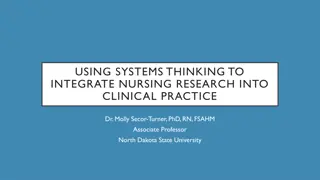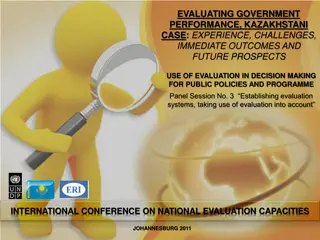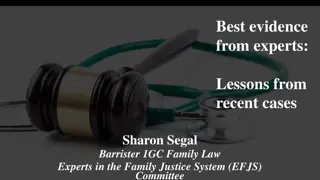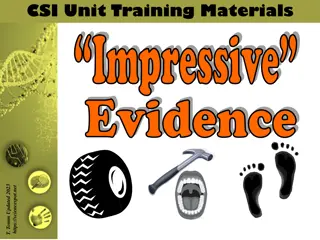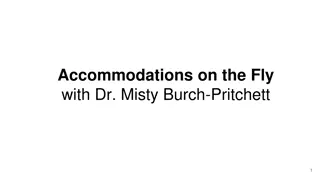The Role of Artifacts and Evidence in Educator Evaluation and Support
Exploring the role of artifacts and evidence in educator evaluation, this content covers the three categories of evidence required by the Oregon Framework. It delves into the efficient process that reduces redundancy, essential components of SLG goals, and the types of evidence relevant to professional practice and responsibilities. The distinction between on-stage (observations) and off-stage (artifacts) evidence is highlighted, emphasizing the impact on learning. Various examples of artifacts that demonstrate educator performance and align with goals are discussed, offering insight into the evaluation process in the education field.
Download Presentation

Please find below an Image/Link to download the presentation.
The content on the website is provided AS IS for your information and personal use only. It may not be sold, licensed, or shared on other websites without obtaining consent from the author. Download presentation by click this link. If you encounter any issues during the download, it is possible that the publisher has removed the file from their server.
E N D
Presentation Transcript
The Role of Artifacts and Evidence in Educator Evaluation and Support Oregon Department of Education 1
Outcomes Explain the three categoriesof evidence required by the Oregon Framework, and identify concrete examples of each Understand the role of artifacts in the evaluation process Identify a process that is efficient and effective and reduces redundancy Oregon Department of Education 2
Required Components of SLG Goals Self- Reflection Summative Evaluation Goal Setting Observation & Evidence Collection Observation & Evidence Collection Formative Assessment Oregon Department of Education 3
1. Multiple measures of student learning and growth Three Types of Evidence 2. Evidence relevant to professional practice Observations Artifacts 3. Evidence relevant to professional responsibilities Includes evidence collected by the educator and shared with evaluator Oregon Department of Education 4
What is evidence? the available body of facts or information indicating whether a belief or proposition is true or valid signs; indications Can be gathered on stage or off stage Oregon Department of Education 5
On Stage vs. Off Stage On Stage (Observations) What is seen Aspects of teaching/leadership that are directly observable Off Stage (Artifacts) Behind-the-scenes work that has a significant impact on learning Oregon Department of Education 6
Artifacts should be samples that demonstrates educator performance and impact Artifacts Aligned with educator goals, the standards for professional practice, or school/district goals Oregon Department of Education 7
Possible Artifacts for Teachers Professional Practice Related to Standards Teacher-developed unit assessments Lesson Plans Notes/feedback forms from observations Email communications between educator and evaluator tied to practice Multiple Measures of Student Learning & Growth Student work (quizzes, homework, presentations, etc.) Portfolios Performance assessments Interim assessments State or district assessments Professional Responsibilities Related to Standards Student and staff feedback Grade-level meeting notes Parent/teacher communication log PLC meeting notes Documentation of Professional Learning Oregon Department of Education 8
Possible Artifacts for Administrators Professional Practice Related to Standards 360 feedback feedback to teachers surveys developed collaboratively with staff (re: instructional leadership, teacher/student climate) staff communication records of mentoring/coaching teacher observations; summative and formative teacher evaluation Multiple Measures of Student Learning & Growth Performance assessments Interim assessments State or district assessments Professional Responsibilities Related to Standards administrator reflection professional goal setting school-wide improvement goals parent and community involvement collaborative leadership school-wide budget master schedule Oregon Department of Education 9
How is evidence collected? The educator and evaluator collect evidence using multiple measures regarding student learning and growth, professional practice, professional responsibilities, and student learning to inform progress throughout the process of evaluation Oregon Department of Education 10
Setting Your District Up for Success Get Organized Be Strategic Communicate Expectations Oregon Department of Education 11
1. Get Organized Adopt a process for organizing artifacts by Standard or Indicator and/or goals: Paper-based, email-driven, or online cloud-based system Identify key points of contact throughout the year to review artifacts Assign Responsibility Educator collects and submits artifacts throughout the evaluation cycle Evaluator organizes and analyzes artifacts Oregon Department of Education 12
2. Be Strategic The more focused the Student Learning and Growth and Professional Goals, the easier it is to identify and collect artifacts Share examples of artifacts during faculty or team meetings that provide evidence of more than one Standard or Indicator Identify common artifacts that all or most educators might already be collecting (unit assessments, parent-teacher logs) Number of artifacts to collect varies by educator Oregon Department of Education 13
3. Communicate Expectations Artifacts should be samples that demonstrates educator performance and impact Evidence should be clearly tied to educator goals, Standards, or Indicators Provide everyone with a clear idea of what, how, and when to share products of practice Oregon Department of Education 14
Possible Processes Artifacts reviewed through the lens of the performance rubric vs. artifact tool Choice of artifacts left up to educator and evaluator vs. district required list of artifacts Other? Oregon Department of Education 15



